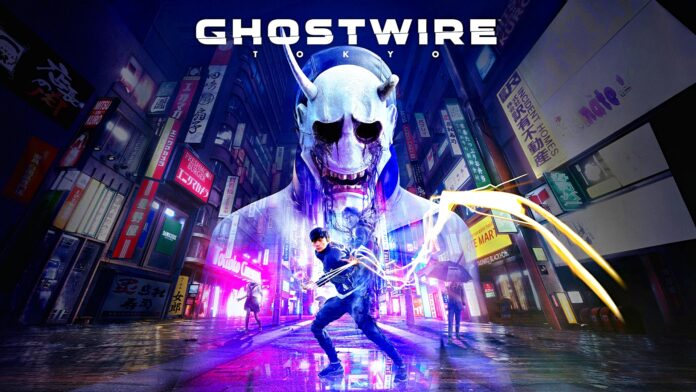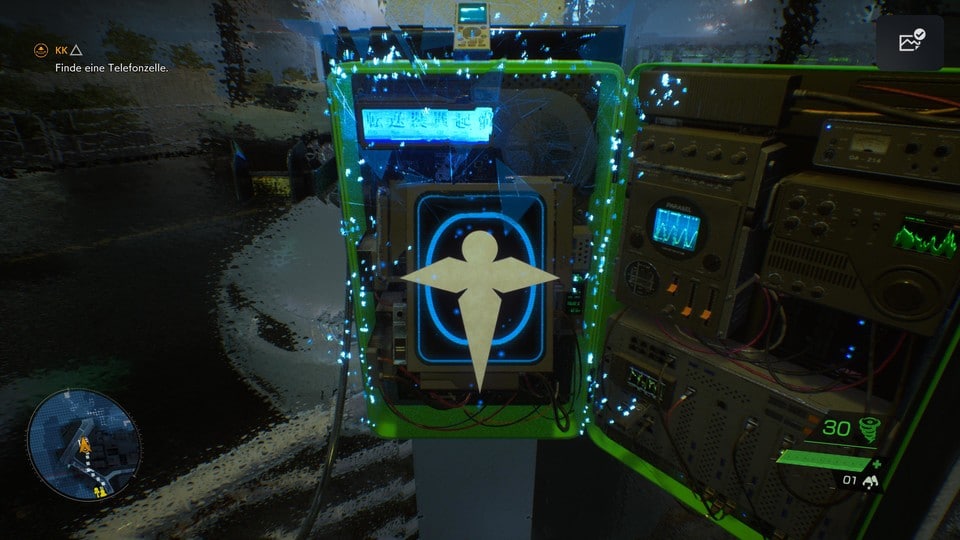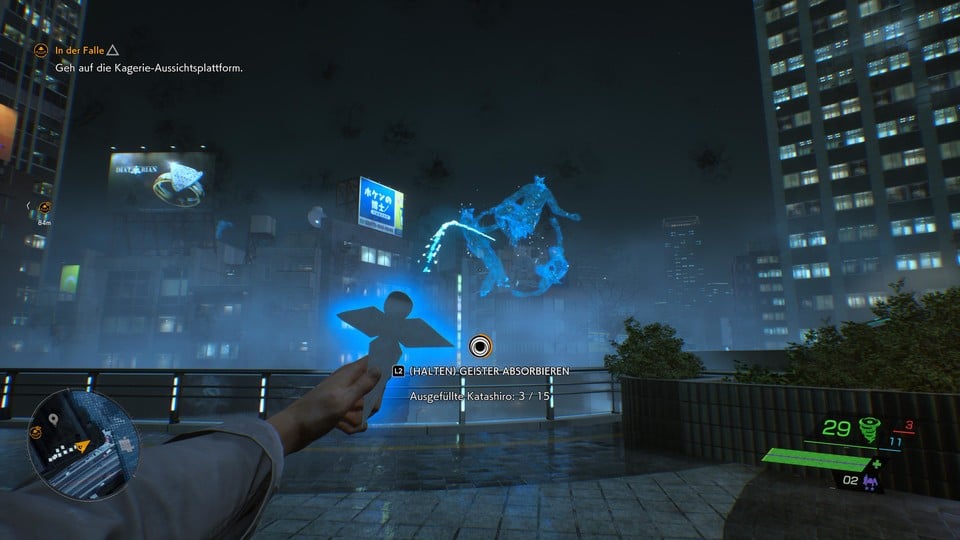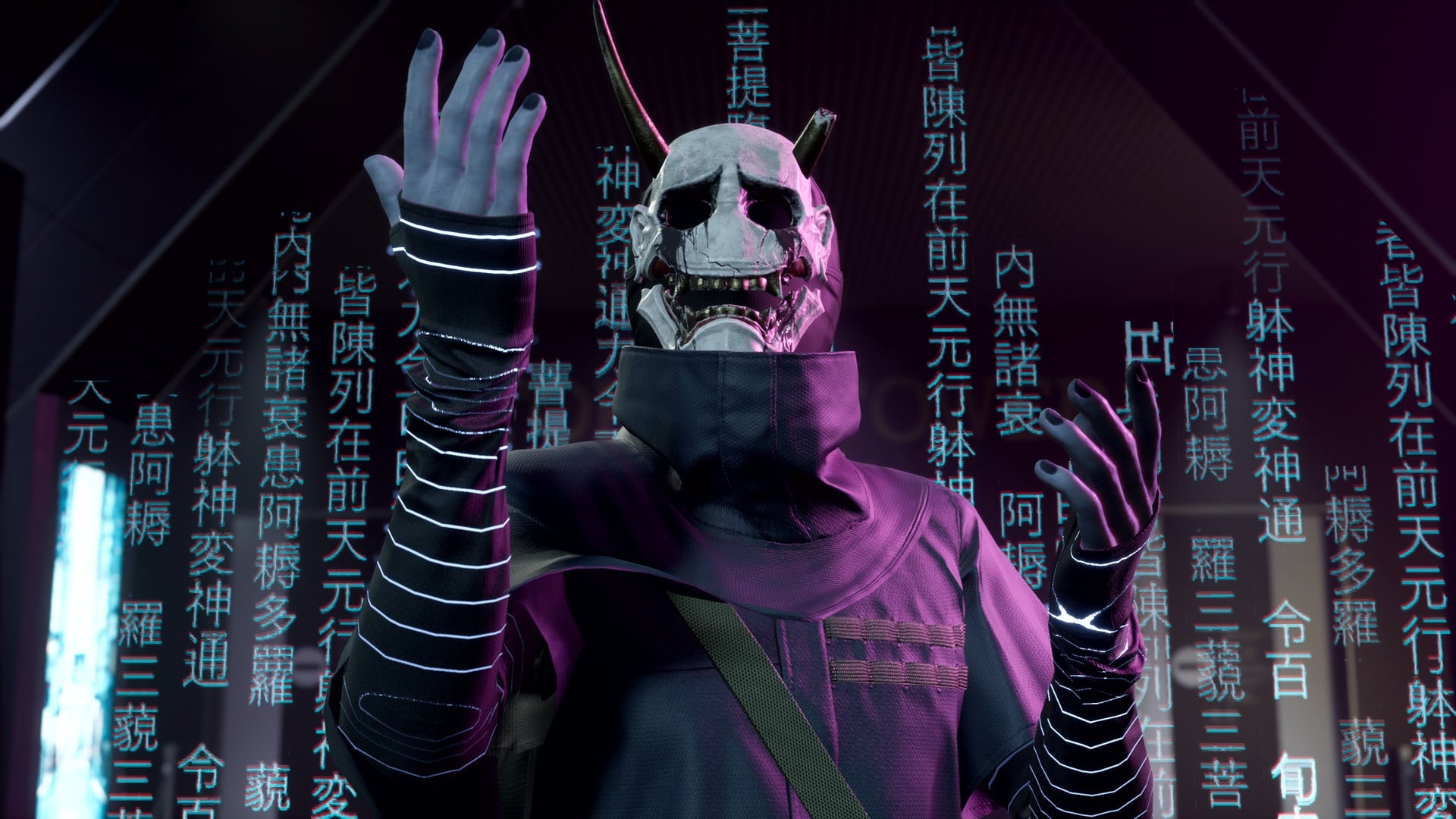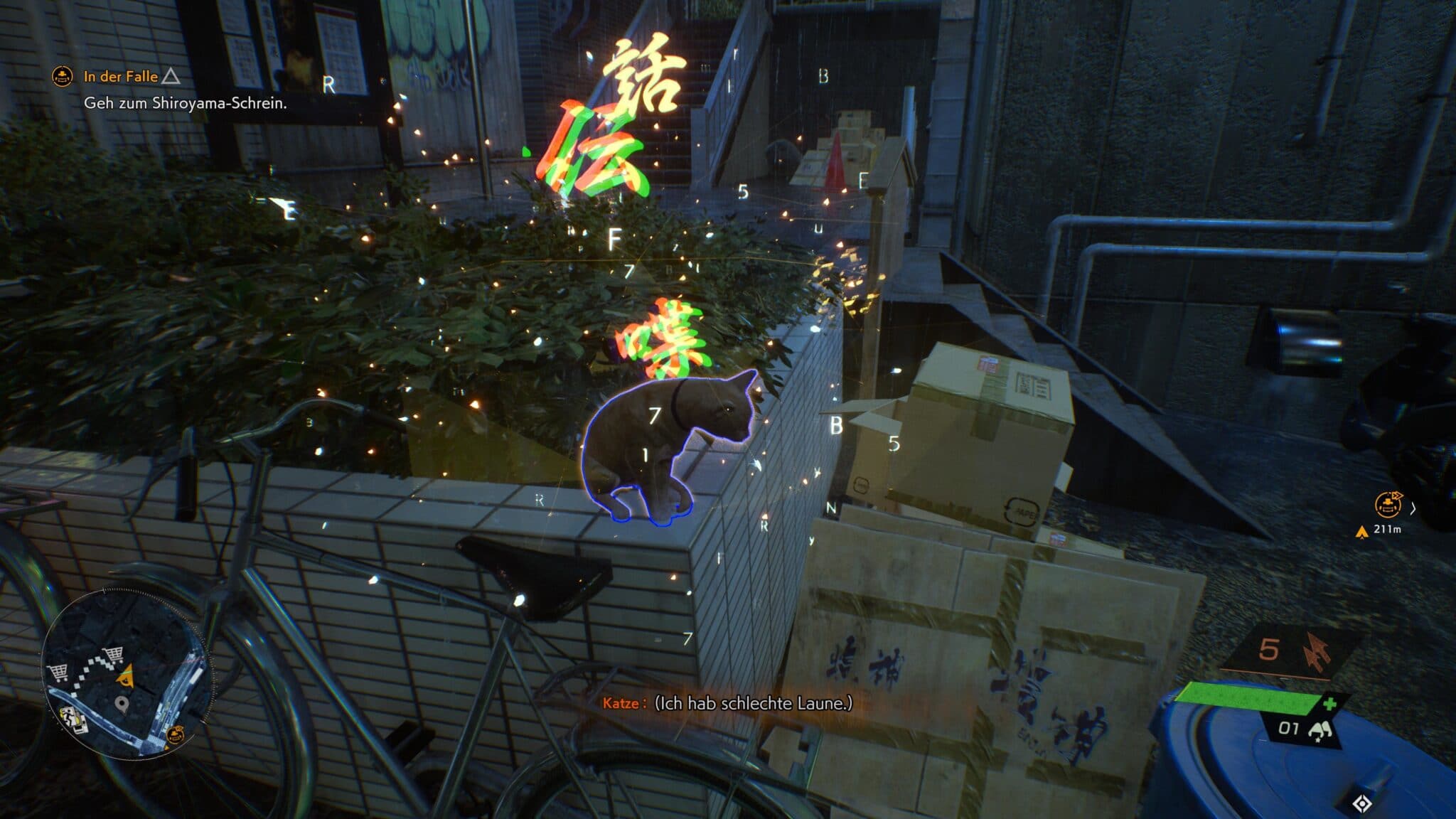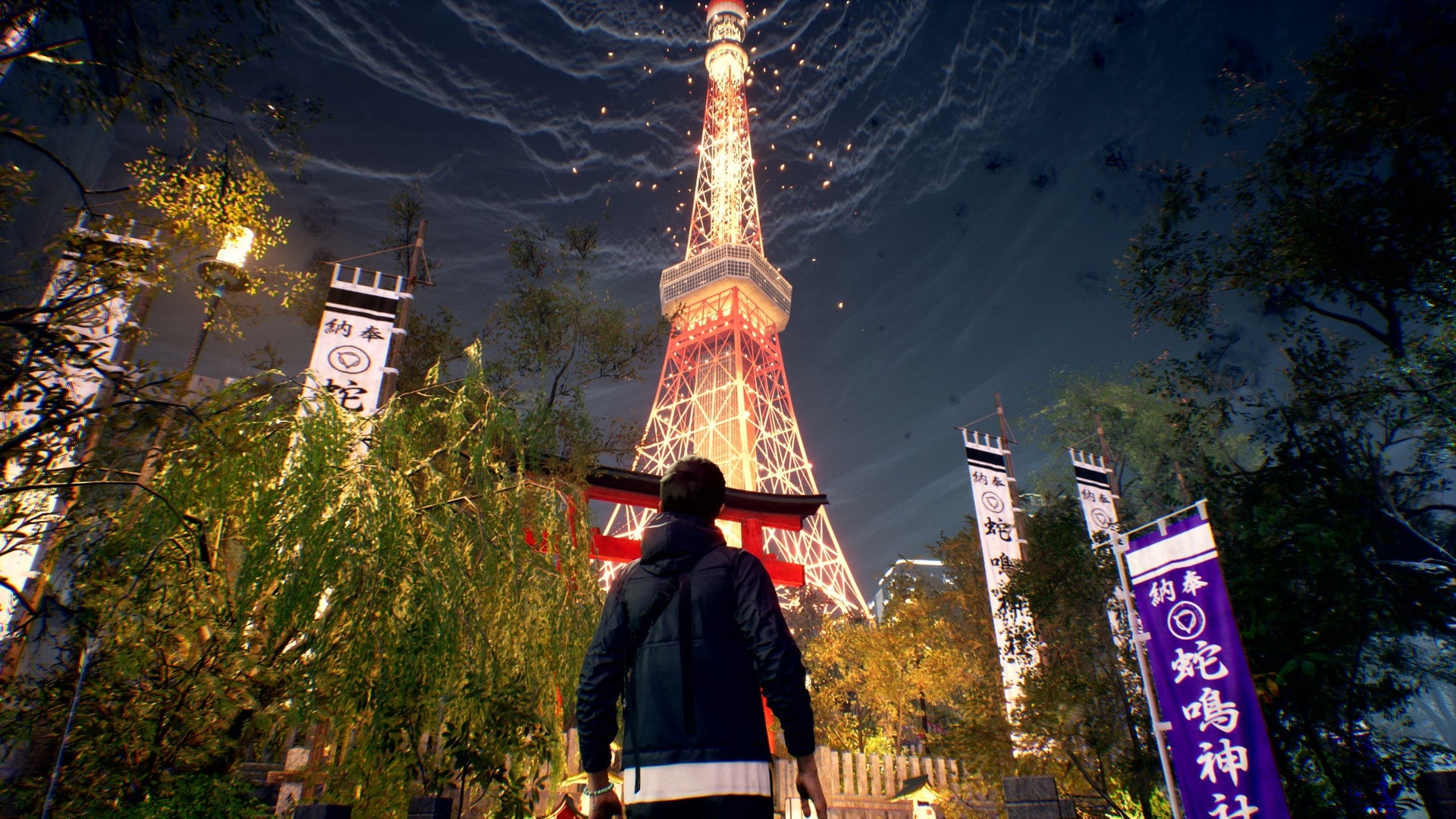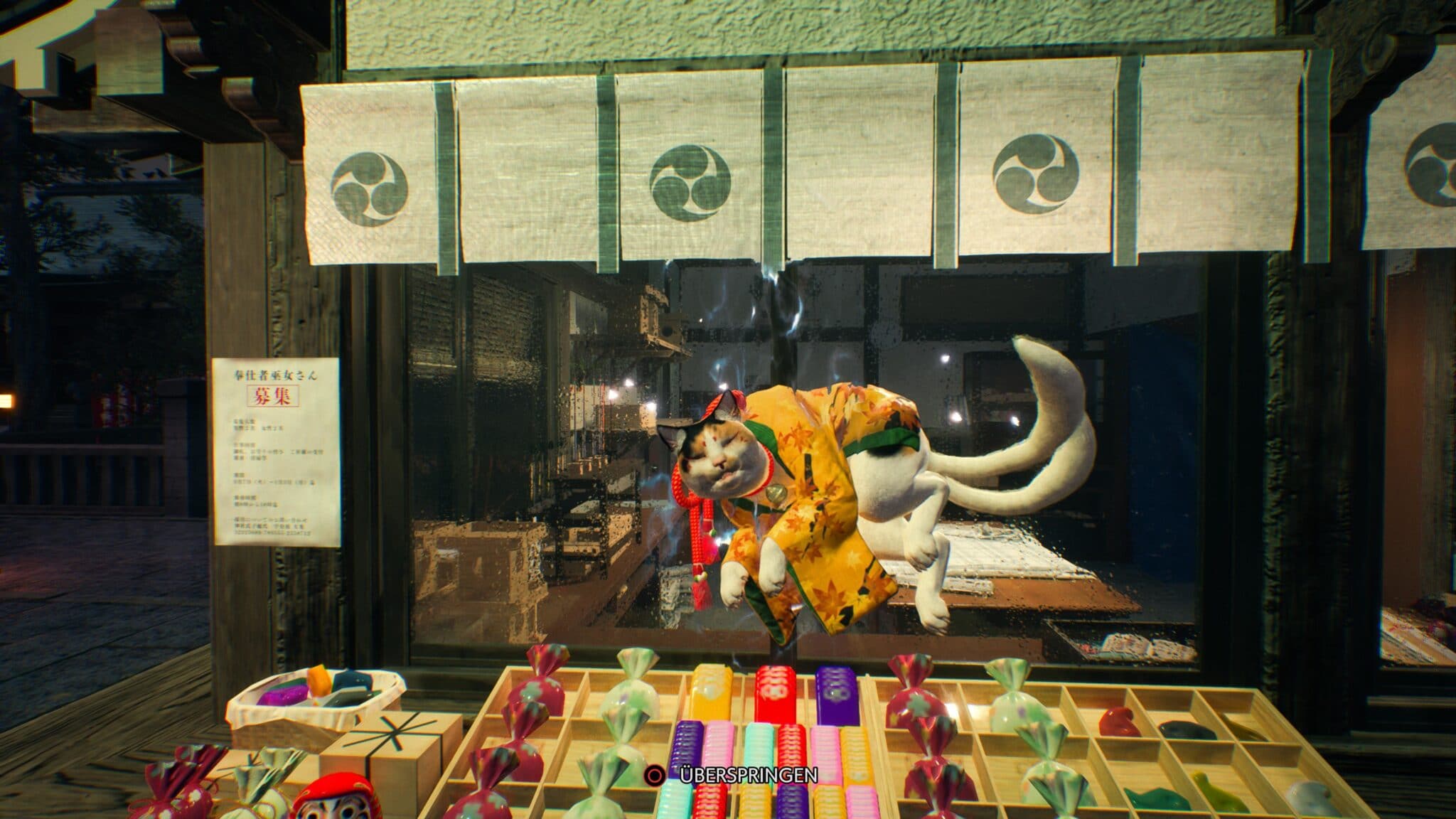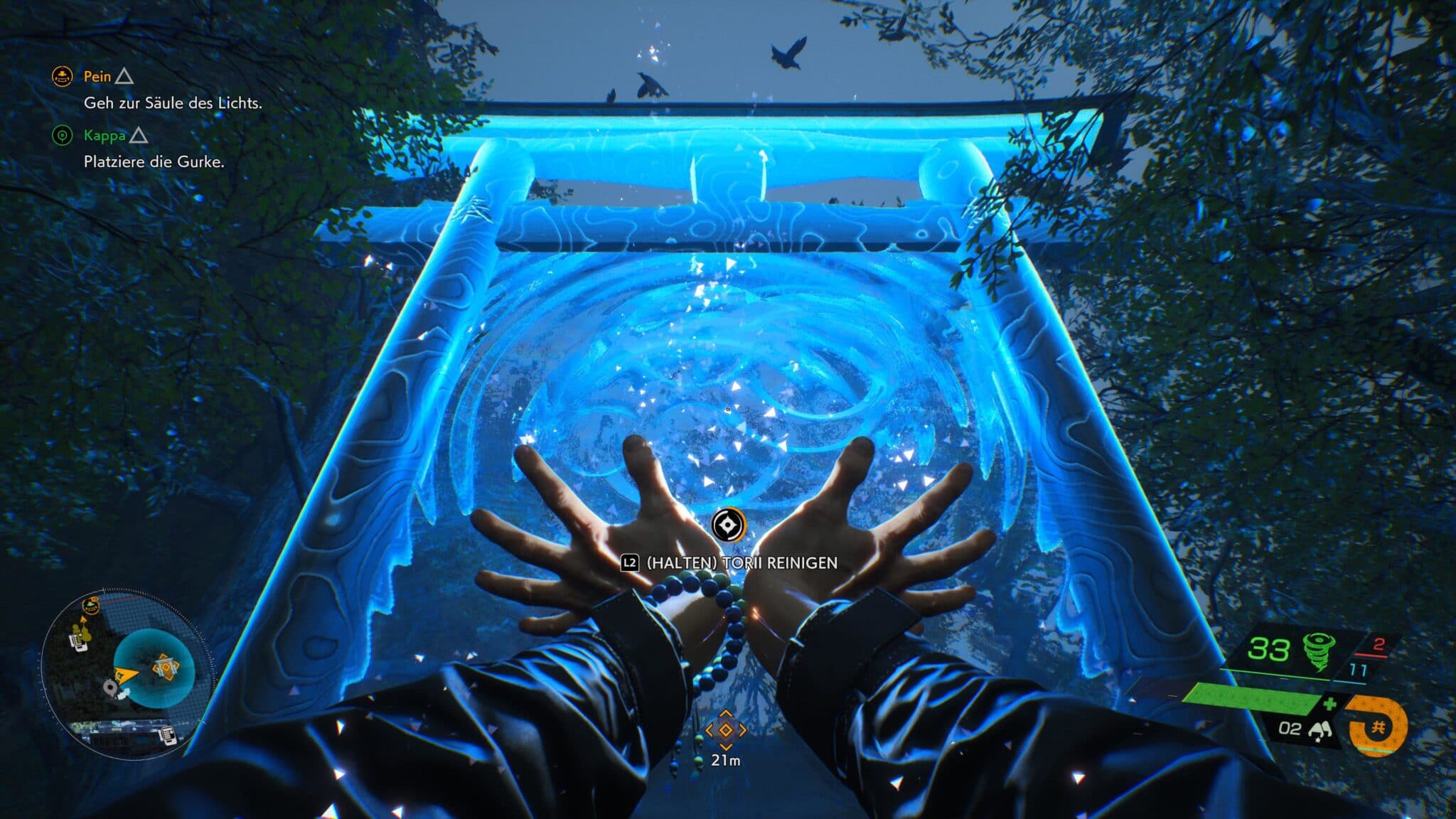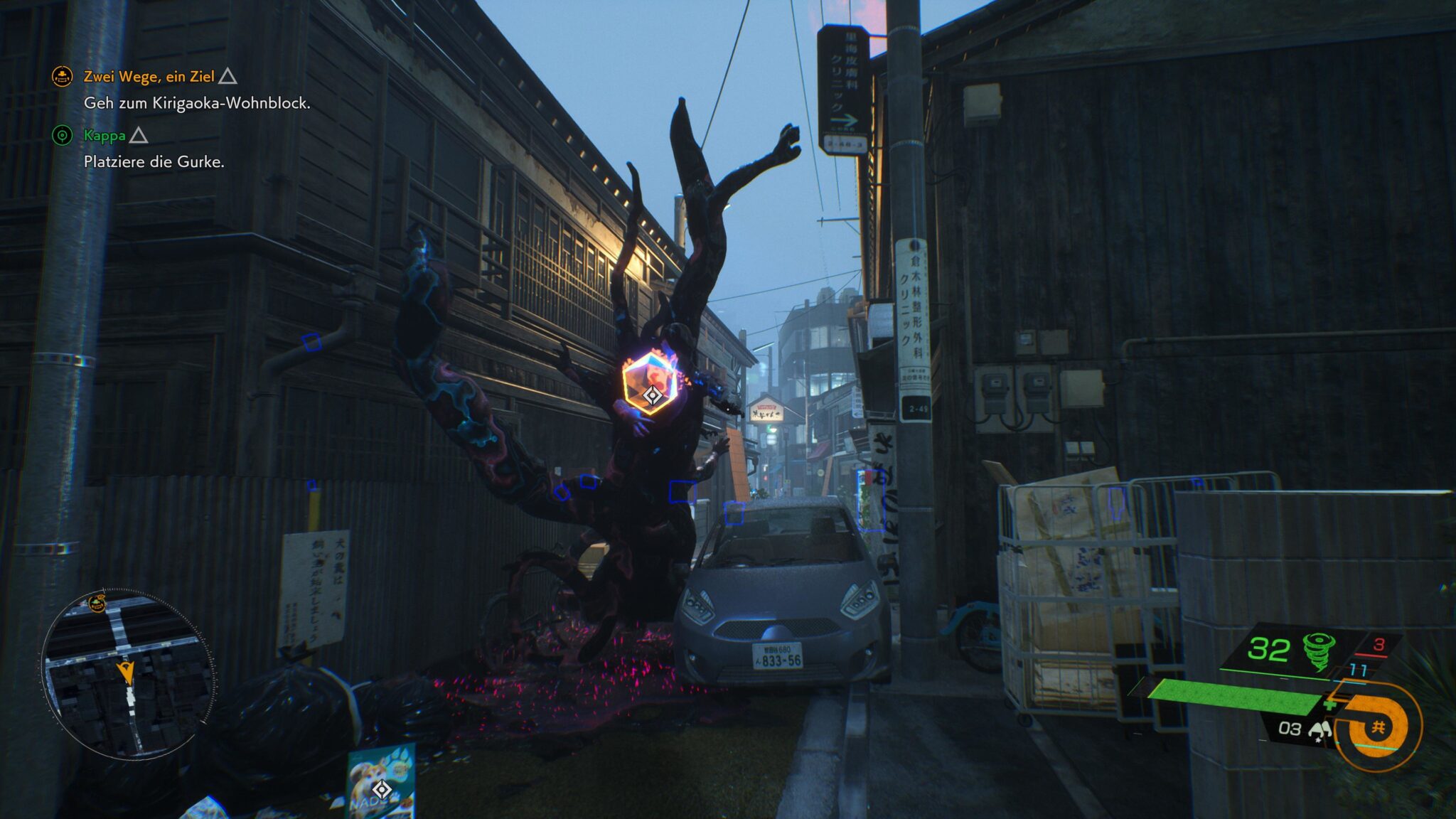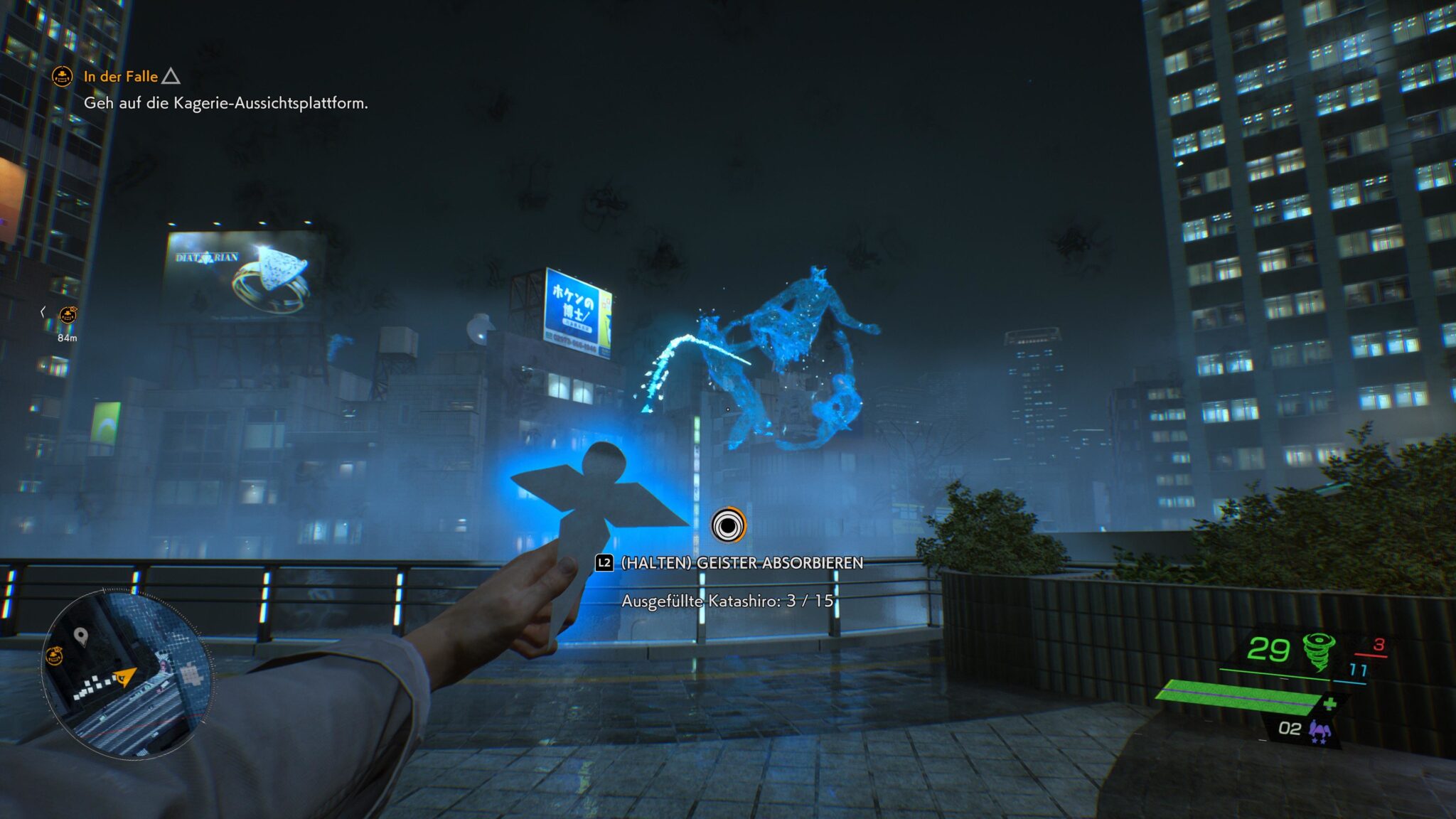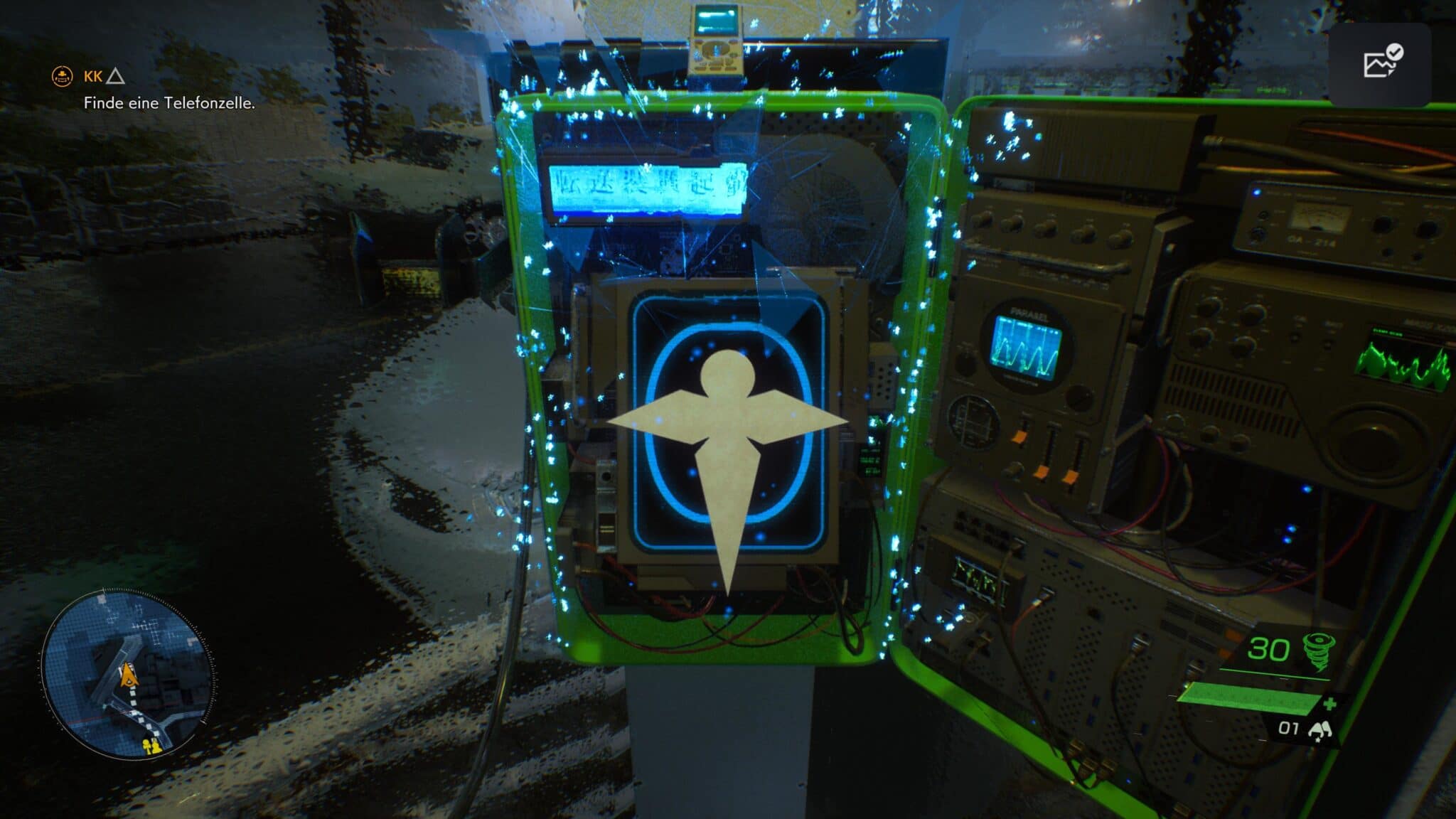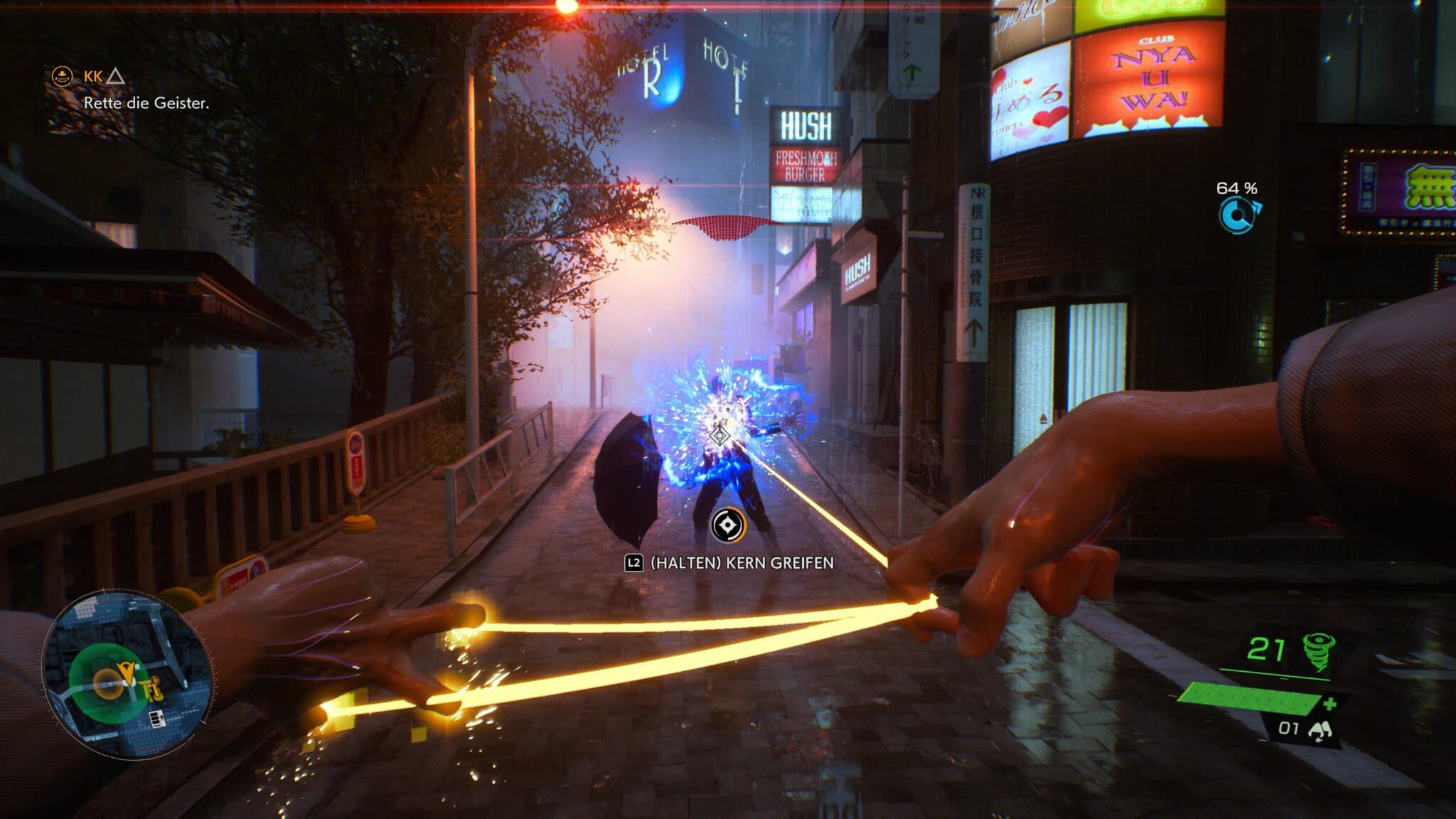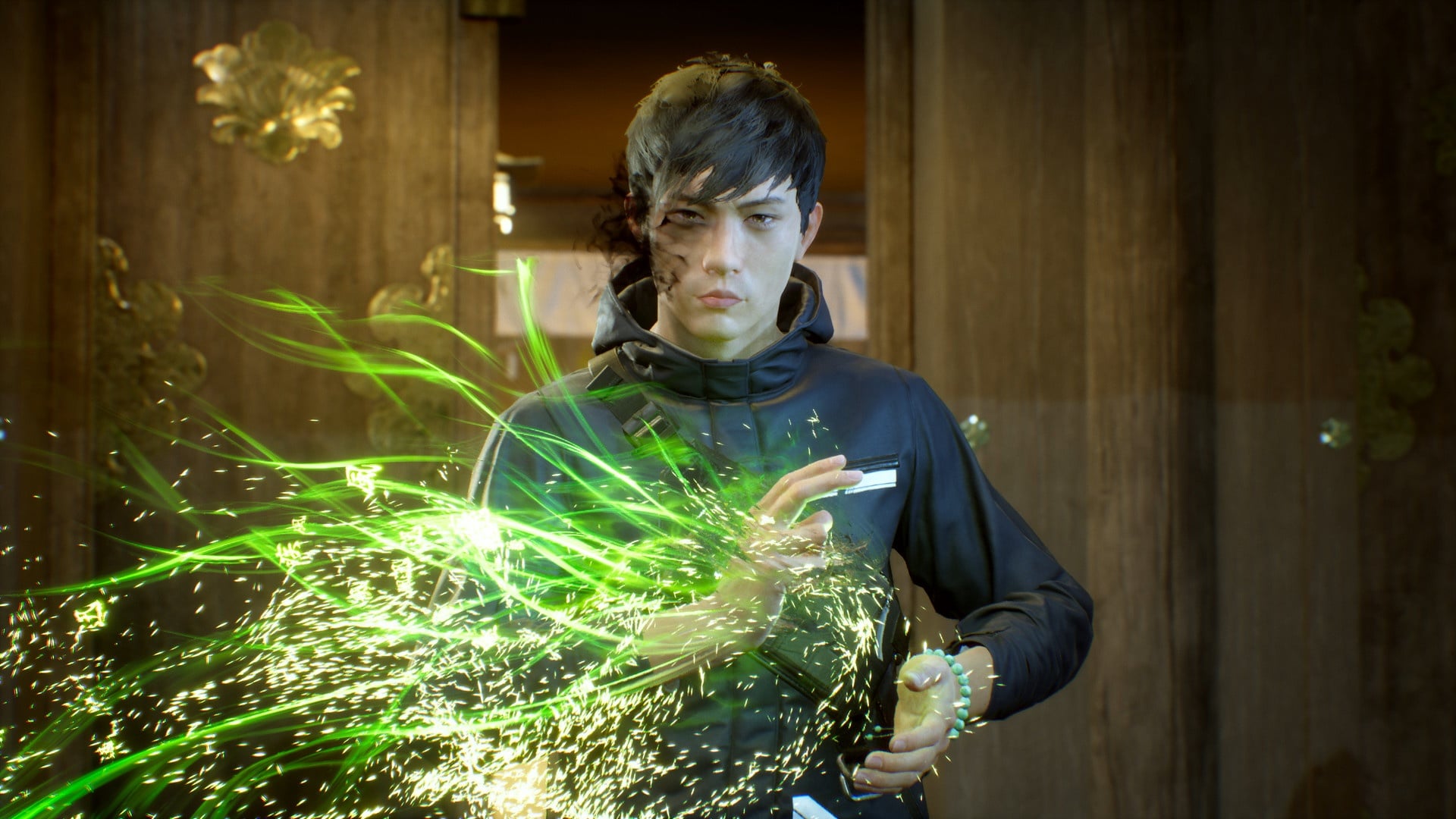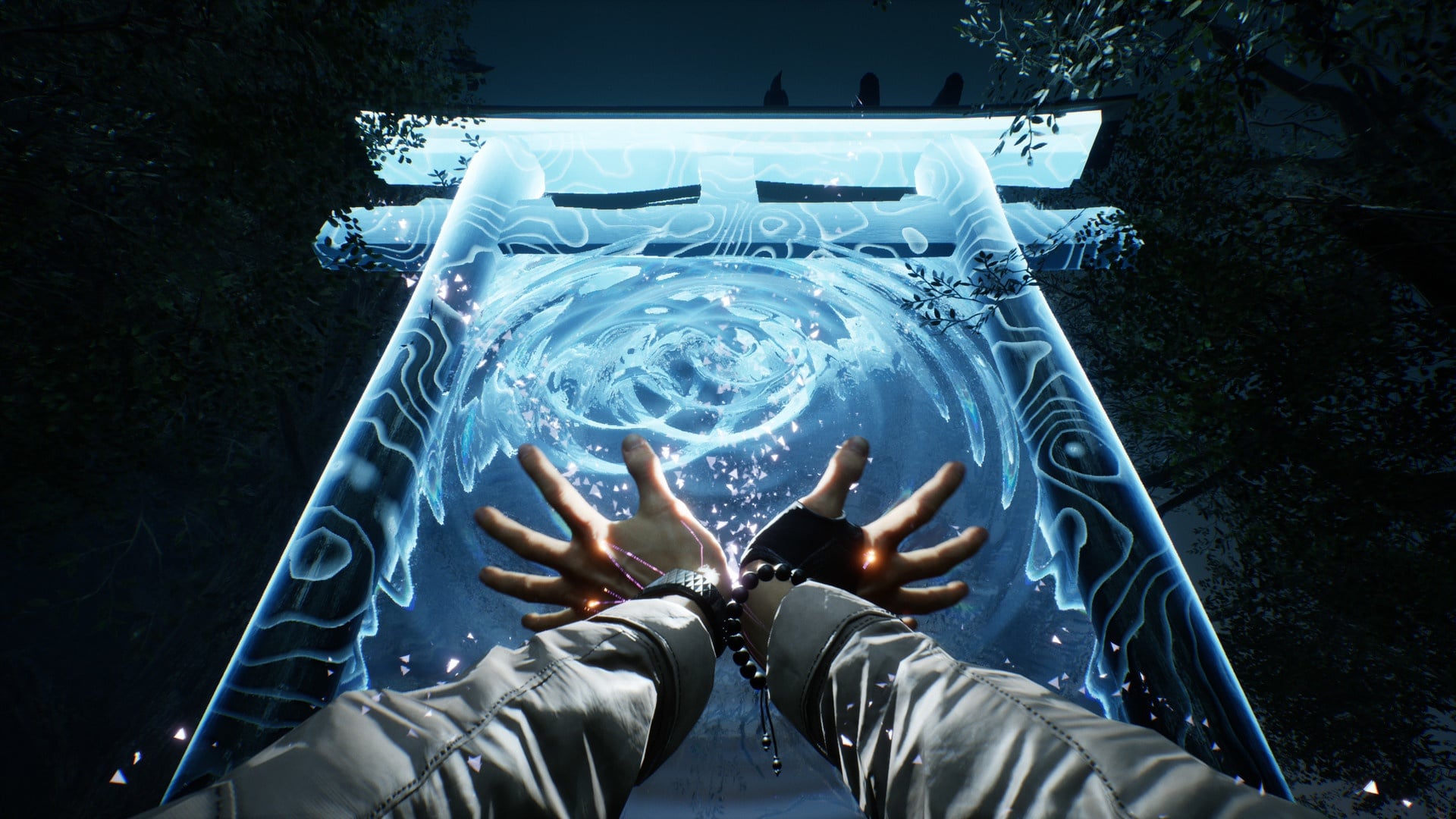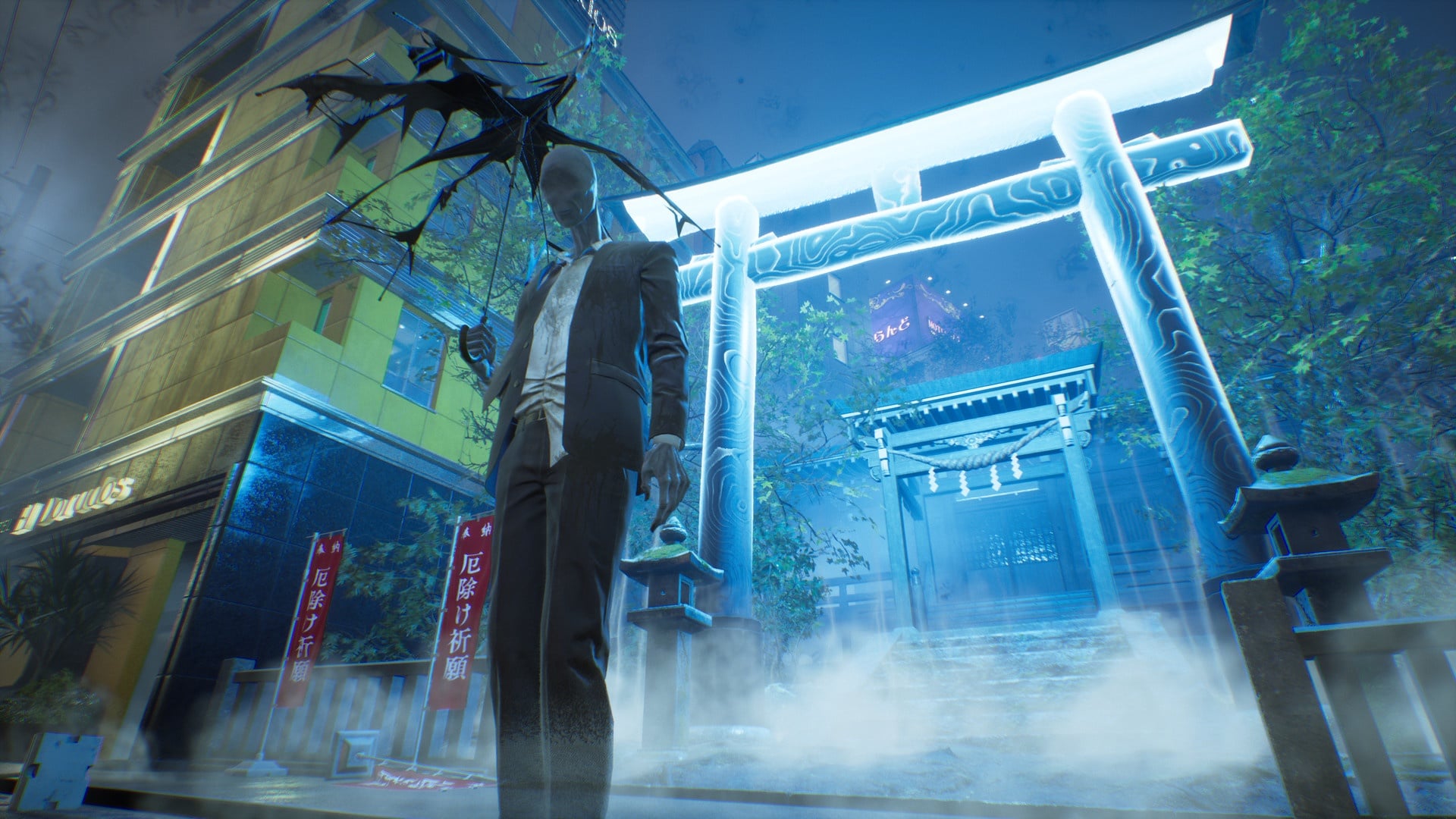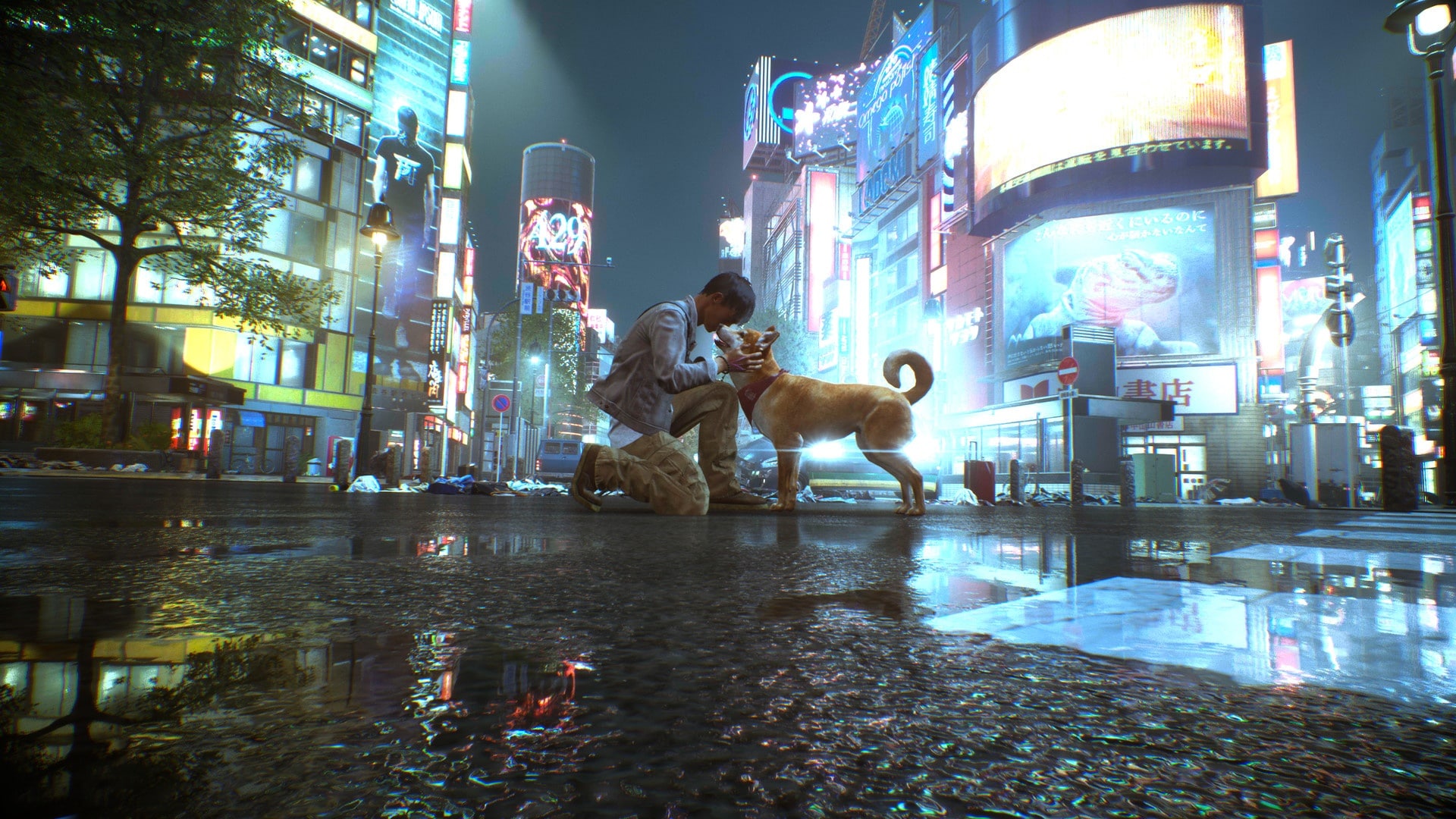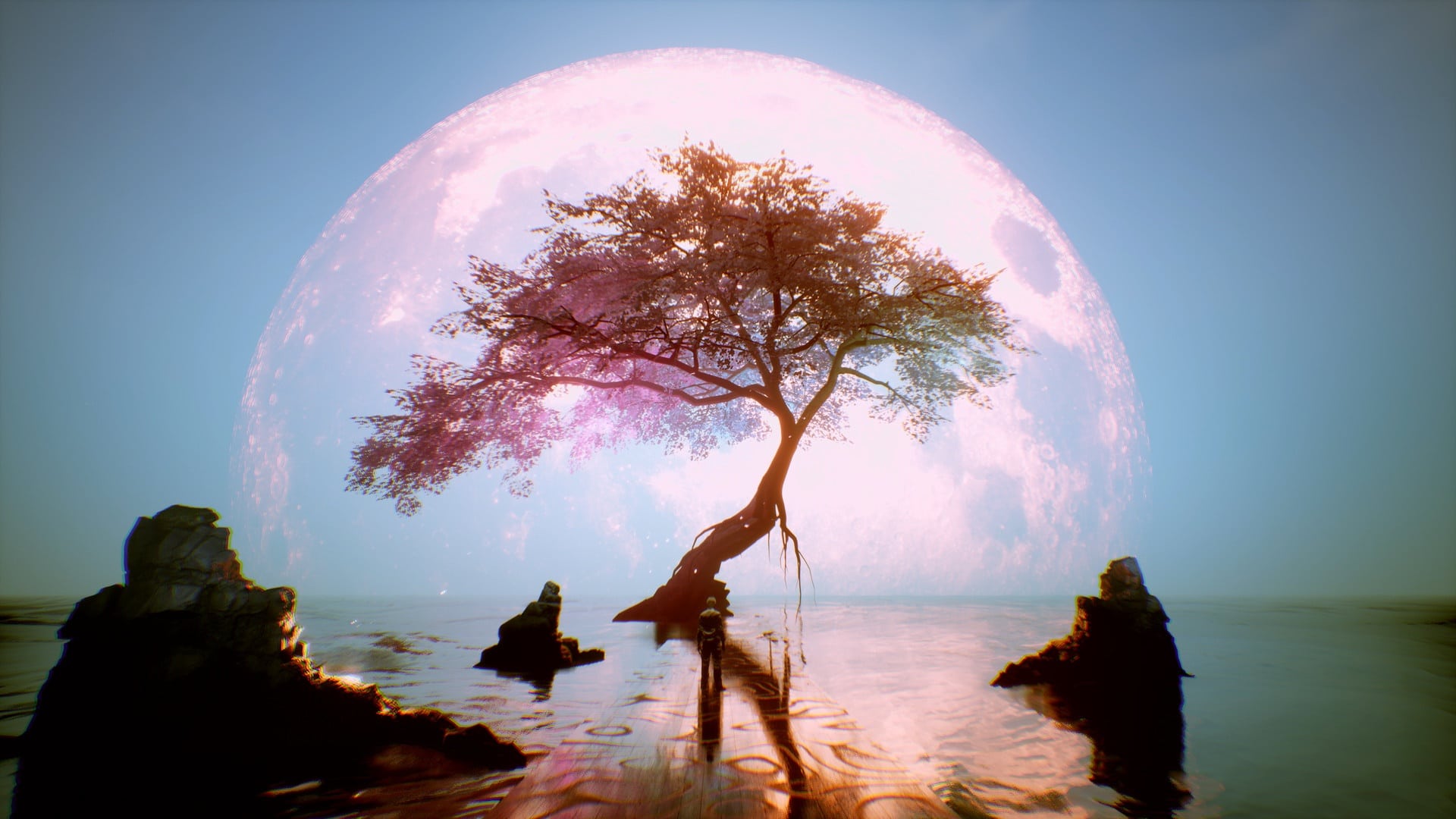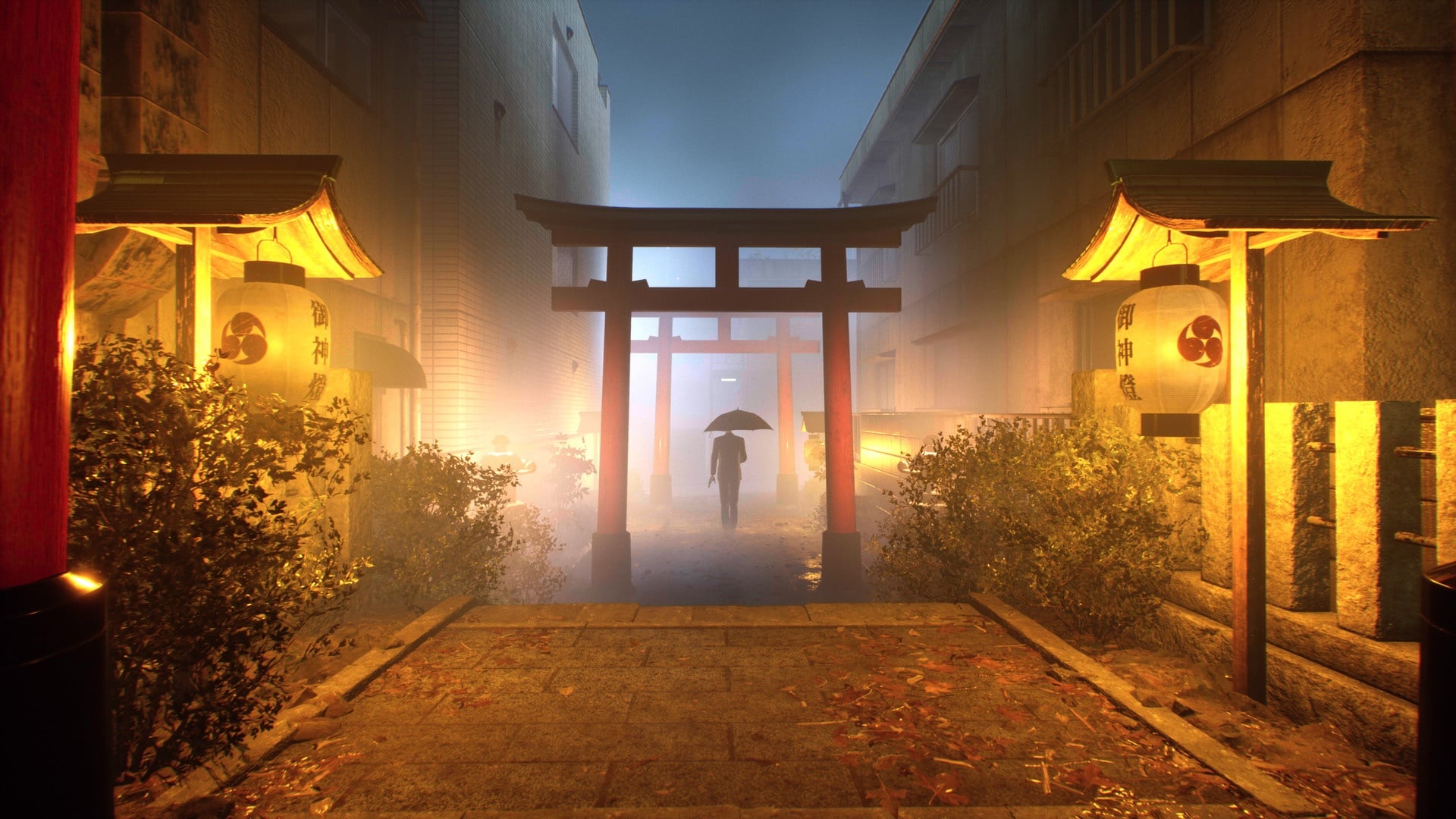After six hours in the game, we can already give the horror shooter a good assessment, but are only moderately impressed away from the open world.
When Shinji Mikami first revealed his new project Ghostwire Tokyo at E3 2019, no one really knew what kind of game it was. The first gameplay trailers gave me a better impression, but I still didn’t quite understand it at that point. What was shown was too abstract, too far away from the titles that we had previously known from the notorious horror developer.
Many of you will probably remember the (scene from Resident Evil) where a gammy quadruped jumps you from behind. I died a thousand deaths in this scene, which Mikami helped invent, which was probably also due to my slightly too young age.
But both parts of The Evil Within, under the direction of Shinji Mikami, were also able to teach me fear with the dense atmosphere, the gruesome enemy design and the many surreal moments.
So far, I have spent six hours in the first two chapters of Ghostwire Tokyo. My first conclusion: You can expect an unbelievably atmospheric open world, but it wastes a lot of potential.
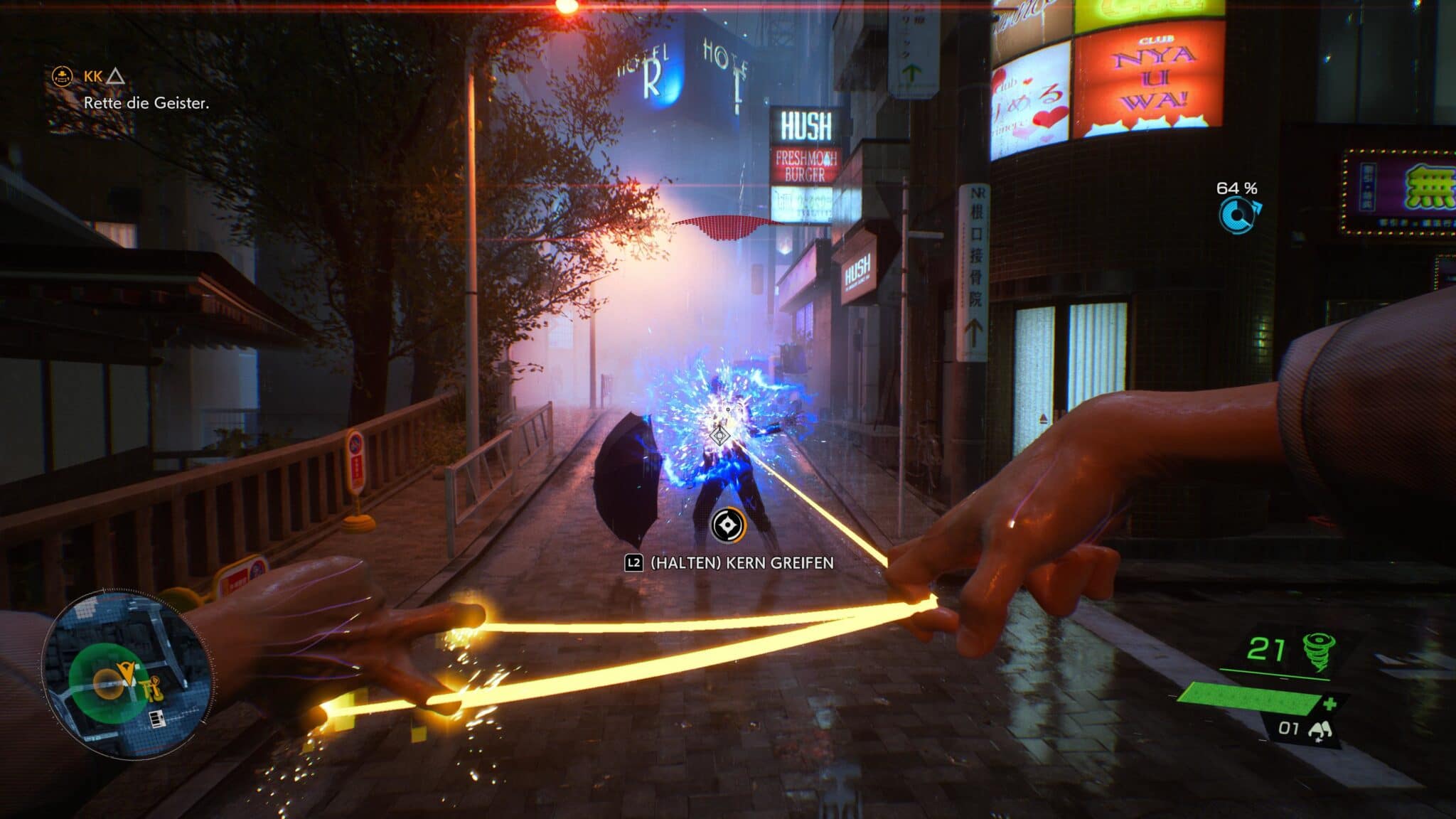
Table of Contents
A far too wild genre cocktail
I’m thrown right into the action and find myself in the midst of mysterious events unfolding in a major Japanese city. The souls of the inhabitants are all sucked up by a masked curmudgeon – except for that of Akiro, the protagonist of the game. But even he does not survive the incidents, as he is partially taken over by a ghost called KK.
Although KK initially comes across as an uninvited guest, a useful partnership crystallises quite quickly as he transfers his abilities to Akiro. From then on, I did everything I could to get close to the mysterious masked men and free my sister from their clutches.
So far, the first two chapters have seemed to me like a confused mix of thriller and light scary interludes combined with funny humour, which comes out again and again through the many conversations between KK and Akiro. So far, nothing has really clicked for me, but that’s not because of the general plot. It tells an exciting and fresh story. You can find out more in the gameplay preview video:
But it’s hard for me to judge how the plot will develop after the first two chapters. What bothers me most is the general mood, which swings back and forth unusually quickly between horror, comedy and bizarre scenarios without offering enough pauses to let individual scenes take effect first.
So far, the story of some of the side quests has provided a much denser atmosphere. For example, I once have to free a house from the curse of a greedy landlord, while corridors and rooms deform surreally. Even the furniture rarely stays in place, blocking access to rooms or moving in staccato beside me. It’s at moments like these that Ghostwire Toyko’s Evil Within past is apparent, which makes it all the more unfortunate that they’ve been the exception so far.
The 1×1 of the Open World
No exception to this are the battles, which I have spent the majority of my playtime with so far. In order to be able to fight the ghosts at all, KK gifts me with three combat abilities that resemble a conventional arsenal of weapons.
The green ability is the equivalent of a pistol, the blue one resembles a shotgun and the red ability a rocket launcher. The attacks look cool at first, but lack creativity in the long run. The supernatural abilities could be used in so many different ways – so why do they degenerate in Ghostwire Tokyo into a mere lead shot replacement?
For example, how about a lightning-fast vine that I can use to pull enemies towards me, or double jumps that give me a quick mid-air fight? It would be a great help if I could at least dodge reasonably. So far, therefore, I simply lack the necessary tools for a nice dynamic to develop in fights.
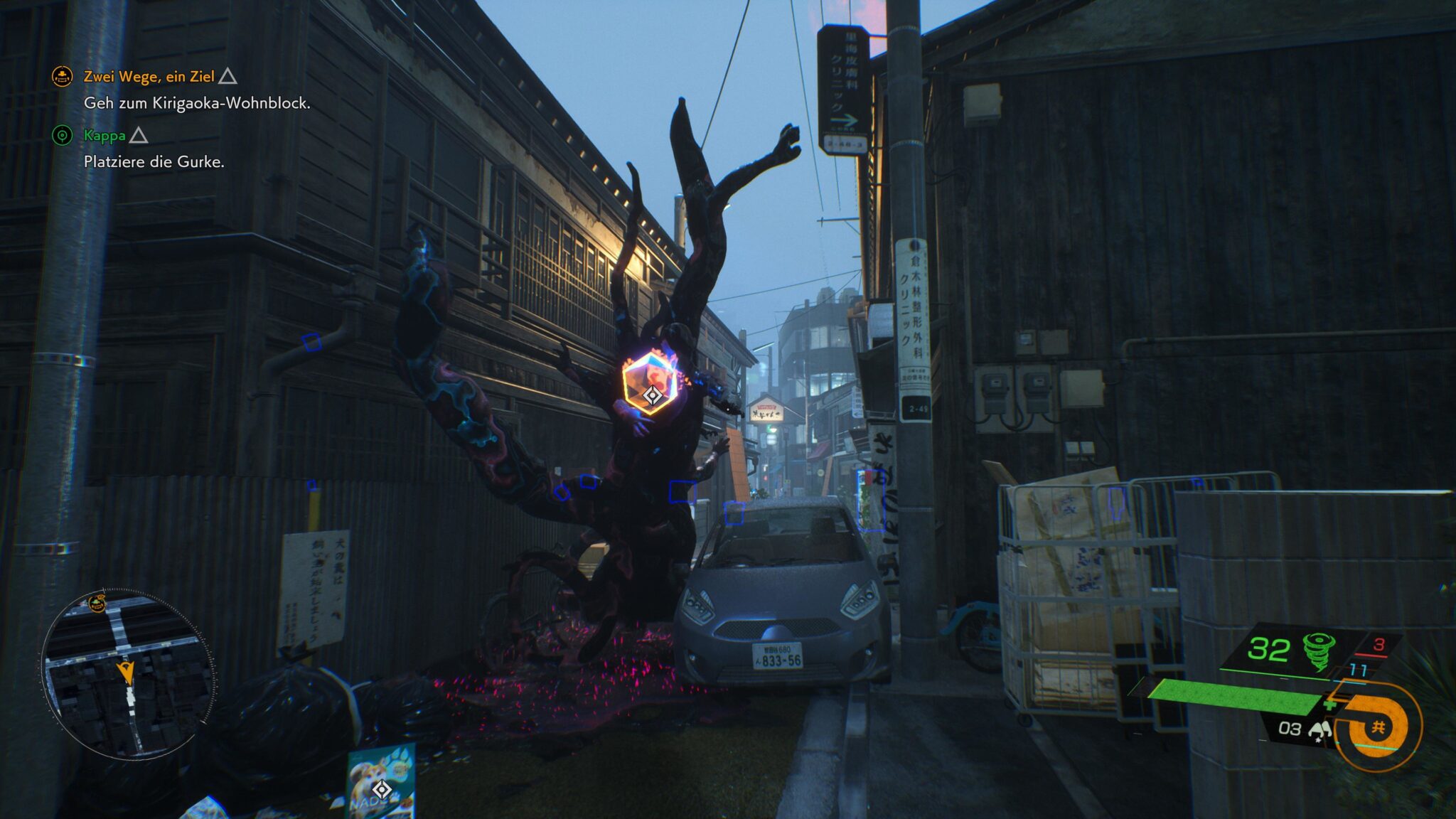
Almost always there are two, three melee fighters and a ghost who slams ghost projectiles around my ears from a safe distance. Then I shoot countless, coloured laser beams from my hands until all the enemies are flattened.
At least there have been a few enemy types so far that force me to try out the other abilities. Nevertheless, there could have been much more here, because Infamous already managed a combat system with comparable superpowers more dynamically.
Moreover, the talent tree suggests that no new abilities will be added in the further course of the game. The points awarded there were hardly exciting anyway, since most upgrades merely let Akiro shoot faster or increase the radius of his attacks.
Fortunately, there is more to do in Ghostwire Tokyo besides all the shooting. Once in the open world, I first set out to grind down side activities to get a general idea of the mechanics. The areas are covered by an open-world-typical fog, which you uncover by cleaning gates.
Most of the time there is a group of enemies loitering outside the gates, which I have to defeat first. Once that’s done, the fog clears and allows side activities to appear in the area, whereupon misery smiles in my face a short time later in the form of a map: a lot of icons.
Fortunately, the flood of icons is not quite as bad as in the wildest days of Assassin’s Creed, but there is still a lot of small stuff to do in Ghostwire Tokyo. This includes a few puzzle interludes, but they are relatively shallow. The ghost view, which shows me important objects in the environment, makes puzzling even easier.
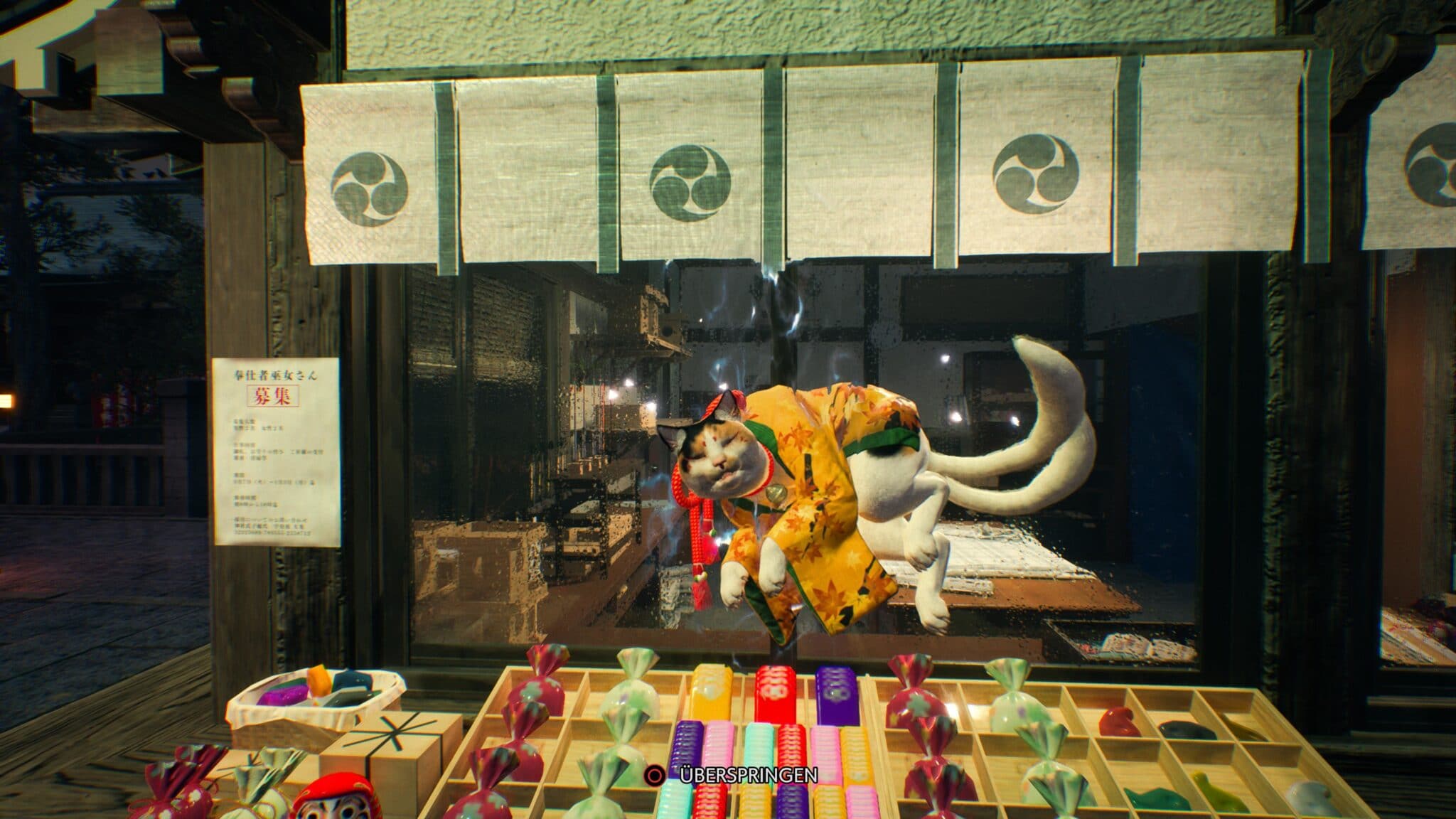
An empty but beautiful big city
So far, Ghostwire Tokyo can score points in at least one respect: the game world. A Japanese metropolis has never been realised more magnificently than here. The virtual Tokyo exudes a charm all of its own and is wonderfully unspent.
While playing, I repeatedly took a break and went exploring, just to look at the many atmospheric streets and buildings. Only the interiors, which are separated from the open world by short loading screens, seem out of time. Especially since most of the flats don’t look very big either.
Editor’s conclusion
As a big Mikami fan I hardly like to say it myself, but the first two chapters of Ghostwire Tokyo couldn’t convince me completely. Except for the setting, everything has been seen before – only in a better way. That doesn’t make Ghostwire Tokyo a bad game, but it doesn’t get beyond mediocrity either. The horror interludes are too shallow and too often interrupted by inappropriate comments.
The action also comes up short at times, as basics such as simple dodging are missing. The fights and skills as well as the associated talent tree are far too monotonous for me. The few enemy types also provide too little dynamism. The game world, on the other hand, is visually stunning and makes me want more, which is why I eagerly hope that more will be made of it after the first two chapters.
Since we all know that Mikami is an avid GlobalESportNews reader, I have one more appeal to the former maestro of the horror genre of video games: Please Mikami, let me die the thousand deaths again in the full version, like back in Resident Evil by your gruesome beautiful dogs!

